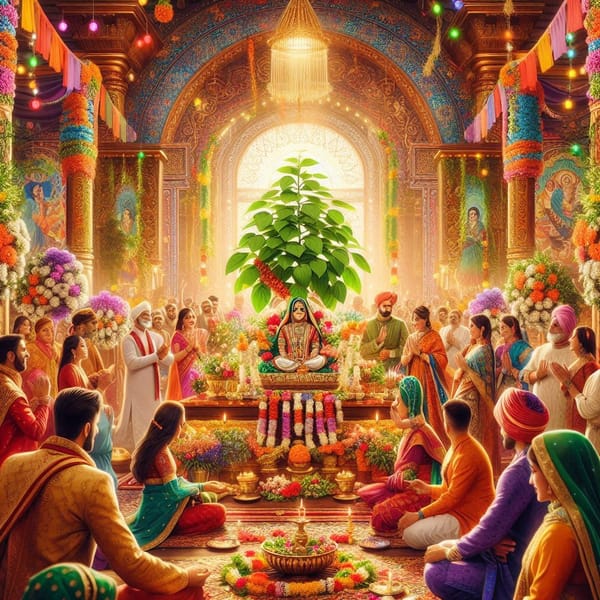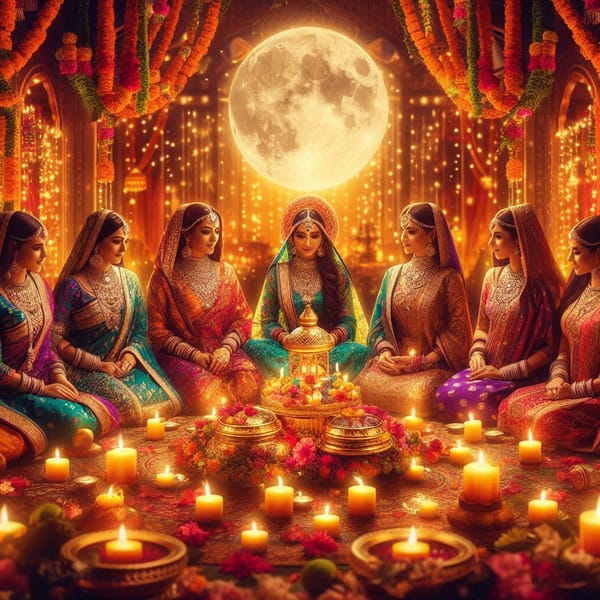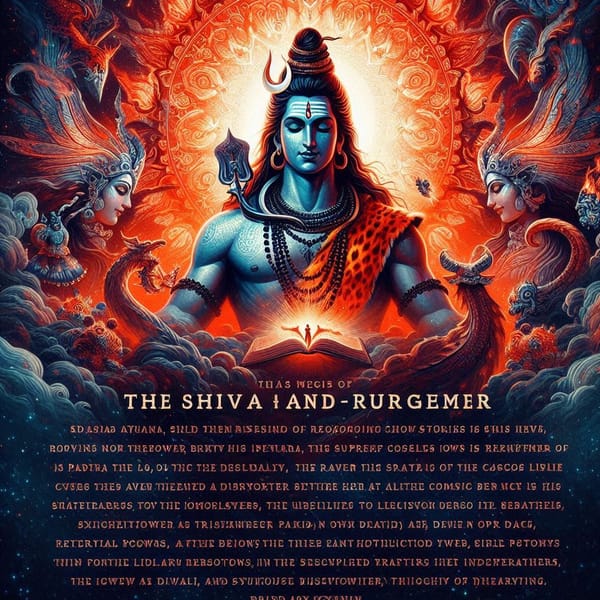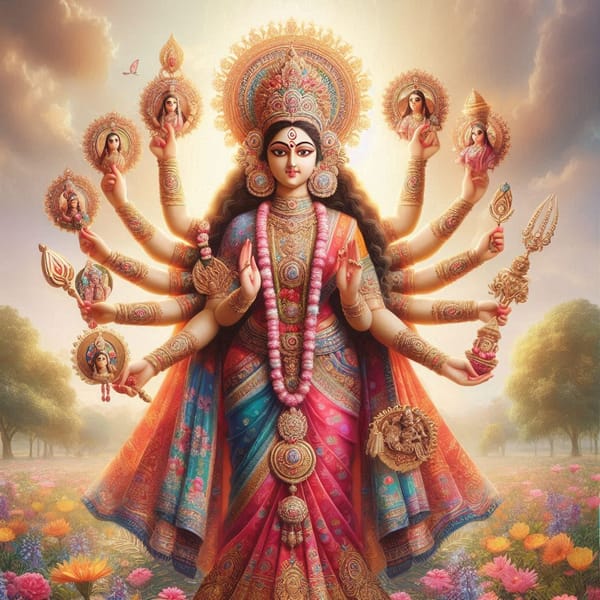Buraq: The Celestial Steed of Islamic Tradition
The Buraq, a celestial steed of Islamic tradition, is known for carrying the Prophet Muhammad ﷺ on his miraculous Night Journey (Isra and Mi’raj). #Buraq #IslamicTradition #NightJourney #SacredHistory #DivineMiracles #OccultSanctum #PropheticAscension #SpiritualRealms
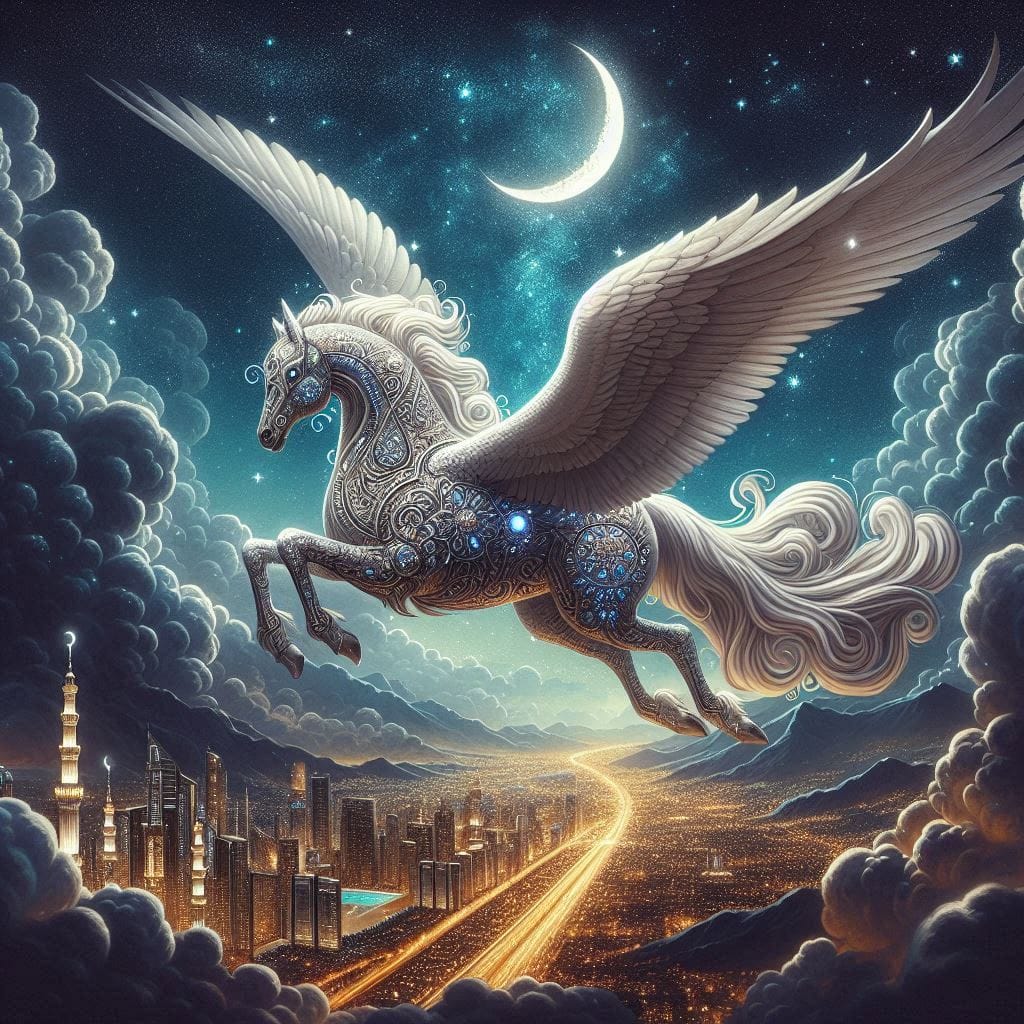
The Buraq is a legendary, celestial creature in Islamic tradition, most famously known as the steed that carried the Prophet Muhammad ﷺ on his Night Journey (Isra and Mi'raj). It is described as a magnificent, winged beast, faster than lightning, capable of traveling between the earth and the heavens in an instant.
Origins and Description
The Name "Buraq"
The name "Buraq" comes from the Arabic root بَرَق (B-R-Q), meaning "lightning" or "radiance." This reflects its supernatural speed and luminous presence.
Physical Appearance
Islamic sources describe Buraq as:
- A white, winged creature larger than a donkey but smaller than a mule.
- Having the face of a human (or a radiant, horse-like face).
- Moving with the speed of lightning, covering vast distances in a single stride.
- Possessing wings, allowing it to soar between realms.
While depictions vary, the most common portrayal is of a shining, winged horse with a human-like face—sometimes even depicted with peacock-like features in Persian and Mughal art.
The Night Journey of Prophet Muhammad ﷺ and Buraq
One quiet night in Mecca, as the city lay in slumber, the Prophet Muhammad ﷺ was resting near the Kaaba when something extraordinary happened. The Angel Jibreel (Gabriel) descended from the heavens, bringing with him a radiant steed unlike any other—a creature known as Buraq.
Buraq was a majestic, white-winged steed, shining like lightning. It was larger than a donkey but smaller than a mule and could travel at an unimaginable speed, crossing vast distances in the blink of an eye.
The Journey Begins: Mecca to Jerusalem
Jibreel spoke:
"O Muhammad, mount Buraq, for you are to embark on a great journey tonight."
As soon as the Prophet ﷺ mounted Buraq, the celestial steed leapt forward, covering leagues of land with each stride. Mountains, rivers, and deserts passed beneath them in mere moments, and before long, they arrived at Al-Masjid Al-Aqsa in Jerusalem—the Farthest Mosque.
There, all the prophets of the past—from Adam to Abraham, Moses, and Jesus (peace be upon them all)—had gathered, waiting for him. Muhammad ﷺ led them in prayer, signifying his role as the Seal of the Prophets.
The Ascension: The Journey to the Heavens
After the prayer, Jibreel guided Muhammad ﷺ to a miraculous ladder of light, known as the Mi'raj, which extended from the earth to the heavens. With the speed of light, the Prophet began his heavenly ascent, leaving Buraq behind at the sacred rock where he had tied it.
As he traveled through the seven heavens, he met:
- Adam in the First Heaven
- Isa (Jesus) and Yahya (John the Baptist) in the Second
- Yusuf (Joseph), Idris (Enoch), Harun (Aaron), and Musa (Moses) in the higher realms
- And finally, Ibrahim (Abraham) in the Seventh Heaven, leaning against the heavenly Kaaba (Bayt al-Ma'mur)
Each of them welcomed him, recognizing him as the final Messenger of God.
At last, he reached Sidrat al-Muntaha, the Lote Tree at the Edge of Creation, beyond which no angel or being had ever passed. There, Muhammad ﷺ spoke directly with Allah, receiving the command for five daily prayers for his followers.
The Return to Earth
After this sacred meeting, the Prophet descended back through the heavens. When he reached Jerusalem, Buraq was still waiting for him, its radiant body glowing under the night sky. He mounted the celestial steed once more, and in an instant, they soared back to Mecca.
As dawn approached, Muhammad ﷺ found himself back in his resting place, the journey complete.
The entire experience—from Mecca to Jerusalem, through the heavens, and back—had taken only a single night.
The Significance of Buraq in the Night Journey
- Buraq was chosen for this divine mission, symbolizing the speed and ease with which Allah can transport His messengers.
- Its role in the journey connects the three holiest cities in Islam—Mecca, Medina, and Jerusalem.
- The Night Journey (Isra and Mi’raj) established the five daily prayers, a cornerstone of Islamic faith.
To this day, the Dome of the Rock in Jerusalem marks the very place where the Prophet ﷺ is believed to have tied Buraq before ascending to the heavens.
Thus, Buraq is not just a mythical creature—it is a symbol of divine miracles, spiritual ascension, and the connection between heaven and earth.
